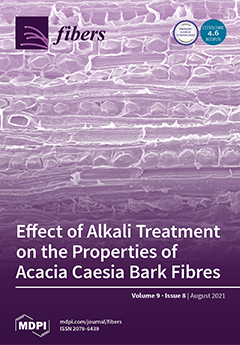In this paper, we report the quantification of potentially toxic elements (PTEs) hosted into two tremolite asbestos from Episcopia and San Severino Lucano villages (Basilicata region, Southern Italy). Micro X-ray fluorescence and Inductively Coupled Plasma spectroscopy with Optical Emission Spectrometry techniques were used
[...] Read more.
In this paper, we report the quantification of potentially toxic elements (PTEs) hosted into two tremolite asbestos from Episcopia and San Severino Lucano villages (Basilicata region, Southern Italy). Micro X-ray fluorescence and Inductively Coupled Plasma spectroscopy with Optical Emission Spectrometry techniques were used to quantify the concentration of major, minor (Si, Mg, Ca, Al, Fe, Mn) and trace elements (As, Ba, Cd, Co, Cr, Cu, Li, Mo, Ni, Pb, Sb, Sn Sr, Ti, Te, V, W, Zn, Zr), with the aim of providing available data useful for the determination of the asbestos fibers toxicity. Results show that in the two studied samples there exist high concentrations of Fe, Mn, Cr and Ni which could lead to the high toxicity of the mineral fibers. By considering the pseudo-total PTEs amounts in each tremolite asbestos, it is possible to affirm that one of the samples is more enriched in toxic elements than the other one (3572 ppm versus 1384 ppm). These PTEs can represent a source of risk to human health since they may be transported away from the geological outcrops, through asbestos in the air, water and soils and thus encountering the human body.
Full article





